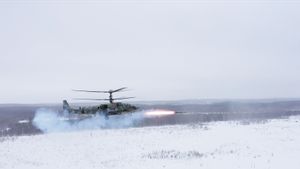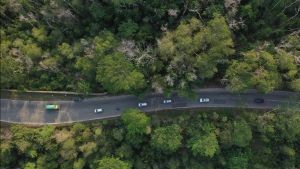JAKARTA - When humans want to land safely on Mars, engineers must find a spacecraft that can slow its pace to survive and enter the atmosphere of the red planet.
Known as the'seven minutes of terror', in 2021 NASA's Perseverance rover was able to land unharmed after descending to the Red Planet using a basic parachute.
But the landing process will be more difficult for larger payloads, such as rockets with humans inside.
Fortunately, the US space agency may have a solution to the problem, in the form of an inflatable heat shield like a large flying plate that will be launched into low Earth orbit this week.
Arriving there, Low Orbit Flight Tests from Inflatable Deselerator (Low-Earth Orbit Flight Test of an Inflatable Deelector /LOFTID) will expand, before descending back to Earth.
NASA hopes the test will show how the heat shield can act as a giant brake to slow down the spacecraft on Mars in the future.
The technology is scheduled to launch on the United Launch Alliance Atlas V rocket on Wednesday 9 November from Vandenberg Space Force Base in California, along with the JPSS-2 weather satellite orbiting at the poles.
Once JPSS-2 reaches orbit, the heat shield will expand and be placed on a re-entry trajectory from low Earth orbit to test its ability to slow down and survive upon re-entry.
If the test works, it could prove important in helping NASA achieve its ambitious goal of launching humans to the Red Planet in the next decade.
"This technology can support crews of large robotic landings and missions on Mars, as well as return heavier loads to Earth," NASA added, quoted by the Daily Mail.
When the plane wants to enter the atmosphere, including on Mars, Venus, Titan, and Earth, one of NASA's main challenges is how to deliver heavy loads.
Like standing, stiff aeroshells are currently limited by the size of the rocket sheath, a sleek protective cover. For example, you may remember the'seven minutes of terror' when NASA's Perseverance used a parachute to descend to the surface of Mars last year.
The radio signal sent from NASA and vice versa takes 10 minutes for one side to make contact, so after the ground team told Perseverance to step down, the rover took over and made a completely epic trip alone.
The spacecraft penetrated Mars' atmosphere moving at a speed of 12,000 miles per hour, but then had to slow down to zero miles per hour seven minutes later to land safely on the surface.
As the spacecraft enters the atmosphere, aerodynamic drag helps to slow it down. However, the Martian atmosphere is much denser than Earth's atmosphere, which presents extreme challenges to aerodynamic deseleration.
The Atmosphere is thick enough to provide some barriers, but it's too thin to slow the spacecraft as fast as in Earth's atmosphere, NASA explained.
NASA's solution to this problem is a 20-foot wide heat shield that will be placed at the top of the atmosphere, allowing the spacecraft to slow down early while undergoing less intense warming.
It will be the largest blunt aeroshell body to ever pass atmospheric entry during tests this week.
After sending the main payload, polar-orbiting weather satellites, LOFTID will be released to re-enter Earth's atmosphere.
It will slow down from hypersonics, more than 25 times faster than the speed of sound, to subsonic flights, less than 609 miles per hour.
Throughout the flight, real-time flares periodically transmit limited data while sensors and cameras acquire a more comprehensive dataset stored on internal data recorders and deletable data recorders that are discarded and restored after re-entry.
LOFTID will deploy a parachute to allow gentle down splashes and will be drawn from the Pacific Ocean.
NASA says the demonstration is poised to'revolution' how to deliver payloads to planetary destinations with atmospheres. NASA states that inflatable decelerator technology can be scaled for manned and massive robotic missions to Mars.
The English, Chinese, Japanese, Arabic, and French versions are automatically generated by the AI. So there may still be inaccuracies in translating, please always see Indonesian as our main language. (system supported by DigitalSiber.id)









